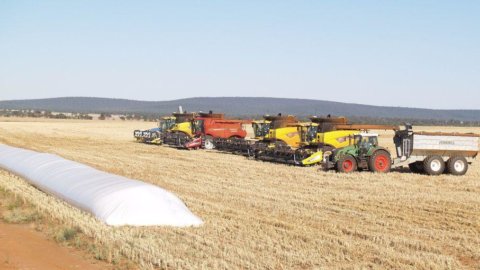It is true that in times of crisis more and more young Italians are looking to agri-food sector as an employment resource? Not exactly. At least from what emerges from one Research carried out this year by Nomisma on a sample of 1.125 young people under the age of 40, including 607 farmers, according to which Italy is the rear light in Europe for agriculture under 40.
The Nomisma survey starts from an essential reference scenario for assessing the future sustainability of the primary sector in Italy and the real extent of the alleged "race for agriculture". The employment trend between 2008 and 2013 is negative: if those who have a job in this sector have decreased by 6%, those with less than 24 years of age register a more than double decrease, equal to -15%.
To this figure must be added the singular rate of senility from which our country suffers compared to other European nations: if in Italy agricultural entrepreneurs over 65 years of age make up 37% of the total, against 5% of those with less aged 35, in France the over 65s are equal to 12%, while in Germany they are only 5,3%.
This demographic structure is obviously reflected in the generational turnover index (ratio between entrepreneurs under 35 and entrepreneurs over 65) which sees Italy in a position of relative weakness compared to the main European countries. If in Italy the generational turnover index is equal to 14% (in 1990 it was 17,5%), i.e. 14 young people for every 100 elderly people, this ratio is 18% in Spain, 73% in France and even 134% in Germany (EU-27 average=25%).
As regards the diffusion of innovation, however, it soon made its way into young farms: the intensity of work per hectare of UAA is lower in young farms (9,7 days/hectare compared to the average of 10,5, 3,8), index of greater innovation/mechanisation; the sectoral average of those who own a computer is limited to 45,5% of farms, a figure that reaches 46,4% in farms run by young farmers. As many as XNUMX% of young people also tend to diversify activities, compared to 37,4% of over 40s.
A limiting vision of agriculture stands in the way of the desire to innovate, identified in the sample of young farmers. Among the handicaps for the development of the activity have been pointed out the bureaucracy and the difficulty of finding financial resources to make investments aimed at increasing the rate of competitiveness.
The Nomisma research shows that less than 10% of young farmers are satisfied with their endowment of machinery and equipment, and, in fact, 3 out of 4 farmers declare that they intend to buy new agricultural machinery in the next 5 years, even if there remains a feeling of uncertainty about the future. The perception by 67% of the interviewees of being considered by the public opinion – as farmers – of a lower “social rank” has a negative influence.
This negative feeling leads 47% of young farmers to hope that their children will continue farming provided there is an improvement in the economic conditions of the sector, while 10% hope that they can find employment in another sector. Similar sensations, mostly negative, also come from the sample of young non-farmers. The idea is spreading that agriculture corresponds to hardship and poverty, even if its social, environmental and economic utility for the community is recognized.





